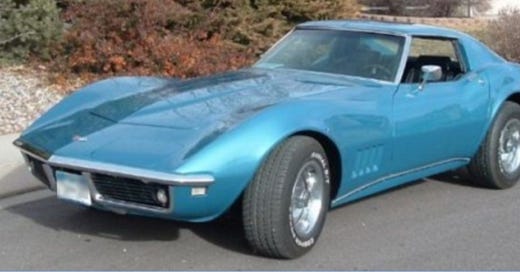After trading up to this used ‘68 coupe in the summer of 1970, the initial excitement of “moving up” to a more modern Corvette quickly gave way to the reality of owning the first year of the re-designed car. It looked like a completely new design, and it was, as far as the body and the interior. The shark-inspired exterior design and the space-age interior had a very futuristic appearance, which was the whole idea behind the re-design. But it became quite evident that the underpinnings were essentially unchanged from the previous five years of production. The chassis had the same rough ride as the C2s, but ironically, at least the running gear was reliable and trouble-free, unlike many of the new features of this car.
The removable roof panels, or T-tops, and the removable rear window were exciting new features. Removing both of them left what was essentially a huge roll bar, which many people thought was pretty cool. But for those of us who used this car as a daily driver, shortcomings became apparent very quickly: the roof panels as well as the rear window tended to leak in heavy rain.
The vacuum-operated panel that covered hideaway windshield wipers was also a new feature on the C3s, but it was annoying when the wiper panel was covered with ice and frozen closed in the winter when you needed the wipers.
The side vent windows from the C2s were eliminated, and replaced with "Astro Ventilation", a fresh air circulation system. The deep-set speedometer and tachometer in the instrument panel looked thoroughly modern, but the fiber-optic system that monitored the exterior lights proved troublesome.
The small block engine ran strong, but overheated in the summer. There was no overflow tank, and the radiator was undersized on the small block engines. The big block engines had larger radiators and didn’t have this problem.
And this is only a sampling of the issues with the ‘68s. So in the final analysis, you could say this car was somewhat of a letdown due to the teething pains associated with many aspects of the new design.
A few years later, after buying a 1970½ roadster, the failings became even clearer by comparison. The 1970½ was near-perfection, without any problems or annoyances.


